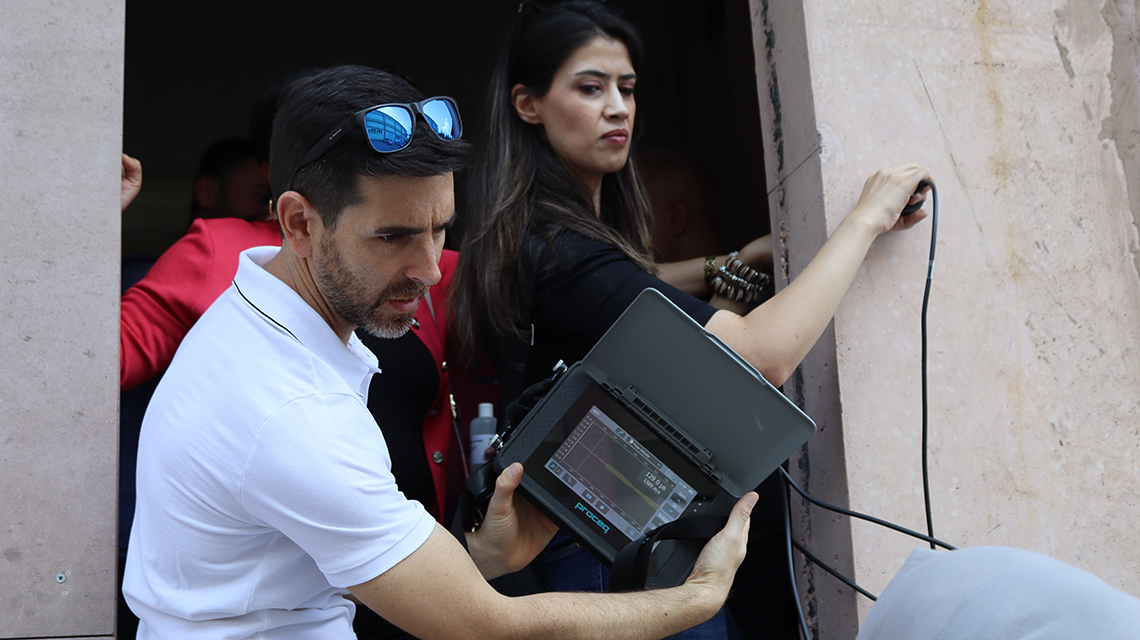Exploring Non-Destructive Testing: A Guide to Advanced Inspection Techniques
Non-destructive testing (NDT) is a fascinating and crucial field that employs various techniques to evaluate the properties of a material, component, or system without causing damage. This approach is invaluable as it ensures the integrity and safety of structures and objects while maintaining their usability. NDT is essential across a wide range of industries, including civil engineering, aviation, and cultural heritage preservation. Let’s delve into the different methods and applications of NDT and their significance in modern industry and conservation efforts.
Understanding Non-Destructive Testing Techniques
NDT encompasses a suite of techniques that utilize interactions with radiation, sound waves, magnetic fields, electrical currents, and various testing agents to scrutinize materials. Among the most commonly employed methods are industrial radiography, ultrasonic testing, liquid penetrant inspection, and magnetic particle inspection.
**Industrial Radiography**: This method uses gamma rays or X-rays to capture images of objects, revealing their internal structure. It is instrumental in assessing the safety and quality of civil engineering structures such as bridges, tunnels, dams, and buildings, which are susceptible to deterioration from environmental stresses and extreme events like earthquakes. Industrial radiography is also widely used in the aviation industry to inspect aircraft structures, turbine blades, and pressure vessels.
**Ultrasonic Testing**: This technique uses high-frequency sound waves to detect imperfections in materials. It is particularly useful for inspecting welds, metal structures, and composite materials. The sound waves reflect off flaws within the material, providing detailed information about their size and location.
**Liquid Penetrant Inspection**: This involves applying a liquid with high surface wetting characteristics to the surface of a non-porous material. The liquid seeps into surface-breaking defects, and any excess is removed. A developer is then applied, drawing the penetrant out of the flaws to form an indication. This method is particularly effective for detecting surface defects in metals and ceramics.
**Magnetic Particle Inspection**: This method is used to detect surface and subsurface defects in ferromagnetic materials. The process involves magnetizing the component and applying ferrous particles. Flaws in the material cause a leakage field, attracting the particles and forming a visible indication.
NDT’s Role in Cultural Heritage Conservation
Beyond industrial applications, NDT plays a pivotal role in preserving cultural heritage. Techniques such as industrial radiography and ultrasonic testing allow experts to analyze the internal structures of priceless artifacts, sculptures, and historical buildings without causing damage. This capability is crucial in restoration and conservation efforts, as it provides detailed insights into the condition and composition of these objects, enabling informed decisions about their care and preservation.
Upcoming Developments: ICARST 2025
The future of NDT and its applications will be a focal point of discussion at the upcoming International Conference on Applications of Radiation Science and Technology (ICARST 2025). Scheduled to take place in Vienna from April 7 to 11, 2025, this conference will bring together hundreds of experts from fields related to radiation physics, chemistry, materials science, biology, and engineering. The event will be available via livestream, allowing for global participation.
ICARST 2025 aims to showcase the latest innovations and developments in NDT techniques and highlight how radiation sciences contribute to industrial growth and economic development. The conference will focus on how these technologies support the achievement of the United Nations Sustainable Development Goals by providing versatile tools and processes for producing high-quality products efficiently and sustainably.
Enhancing Global Collaboration in NDT
A key highlight of the conference will be a side event on “Enhancing Global Collaboration in NDT for Disaster Recovery Enhancement.” This session will underscore the importance of robust international stakeholder networks in improving NDT emergency response plans. Hannah Affum, an Industrial Technologist at the International Atomic Energy Agency (IAEA), emphasized the significance of these collaborations, stating, “We will highlight the importance of strong international stakeholder networks in our NDT emergency response plan.”
Additionally, during the conference, Practical Arrangements will be signed with the International Committee for Non-Destructive Testing (ICDNT) to promote the increased use of NDT in industry, civil engineering, and cultural heritage preservation. This partnership aims to enhance the visibility and application of NDT techniques globally, fostering innovation and best practices across various sectors.
Conclusion
Non-destructive testing is a powerful tool that plays a crucial role in ensuring the safety, integrity, and longevity of structures and objects across diverse industries. From safeguarding civil engineering marvels to preserving cultural heritage, NDT techniques offer invaluable insights without causing harm. The upcoming ICARST 2025 conference promises to be a significant event, highlighting the advancements and future directions of NDT and its contributions to sustainable development. As the world continues to rely on these advanced inspection techniques, fostering collaboration and innovation in the field of NDT remains paramount for achieving global safety and preservation goals.
For more information on non-destructive testing and its applications, you can explore resources available on the International Atomic Energy Agency’s website [here](https://www.iaea.org/topics/industrial-radiography).
For more Information, Refer to this article.


































